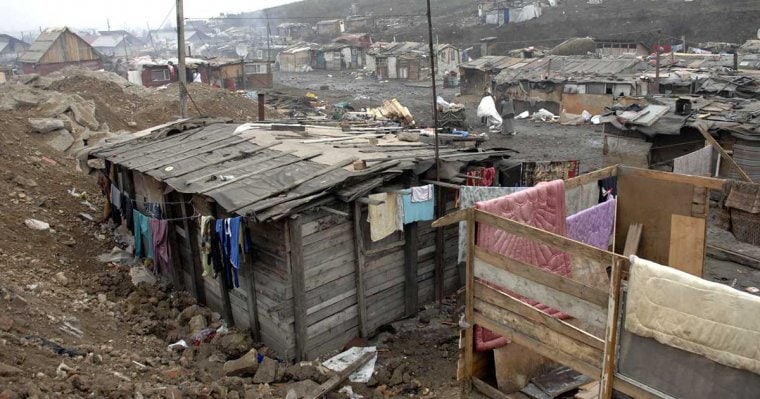according to the video, what type of people generally live in slums?
Building the right definition of a slum is key to properly understand and tackle the problem of these unsafe informal settlements. Before looking at what a slum is, let's reviewthe facts behind the growing global housing crisis:
- i.half dozen billion people live without adequate shelter.
- 1 in vii people on the planet currently lives in a slum.
- 1 in every 4 people will live in a slum past 2030, according to current estimates.
- 1 in three urban residents alive in slums in developing countries.
- In some countries, as much as 90% of the urban population live in slums.
Life in breezy settlements
Slums represent one of the main types of housing in many growing urban cities from Kibera in Nairobi, to New Delhi and Manila. The effects of poverty related to the growth of slums span everything from poor health to education.
As informal (and frequently illegal) housing, slums are often divers by:
- Unsafe and/or unhealthy homes (e.g. lack of windows, dirt floor, leaky walls and roofs)
- Overcrowded homes
- Limited or no access to basic services: water, toilets, electricity, transportation
- Unstable homes:weak structures are often blown abroad or destroyed during storms and earthquakes
- No secure land tenure(i.e. the country rights to live in that location).
As such families living in slums lack the crucial conditions they need to live decently and thrive as human beings. Children are very oftentimes unable to do their homeworks due to leaks and the lack of available light and electricity. Therefore these children tend to perform much worse at school and their drib-out rates are much higher than anywhere else.
Finding a definition of slums: a growing trouble
Today, the current population growth is outpacing the rate at which cities can reply to the need for housing. This is the very status under which slums thrive and abound out of control.
As the world urbanises, many low-income families are often evicted by force and pushed to the edge of cities to unplanned and poorly serviced areas.

This is why we campaign for land reforms in dozens of countries effectually the world. As climate change is starting to affect everyone, and poorer tropical countries first, many families living in slums have to cope with an increasing number of typhoons and thus are forced to rebuild their homes every year – sometimes several times a year.
Many governments turn down to run across slums as such or to recognise their being, since technically those families' homes aren't registered on any documents. To others, certain settlements deserve more attention because the living weather condition and quality of the buildings are much worse than in other areas (which, even so, yet match the definition of a slum).
What is a slum: facts and risks
To better understand the living weather in slums, it'southward essential to look at the health hazards that people are faced with. Life in the slums is far from glamorous every bit families are cut off from the most bones services and oftentimes take to deal with violence.
Health & well-existence
Because unplanned settlements are typically not connected to basic services such as make clean water, sanitation and hygiene facilities, residents are at great risk of contracting water-borne and respiratory diseases (e.g. due to the lack of windows and air vents).
High population density, lack of proper toilets and shut proximity of homes allowdiseases to spread speedily. This creates a real risk for large populations who are often unable to access adequate health facilities to go treatment in fourth dimension.
Safety & violence in slums
Emergency and constabulary enforcement vehicles have difficulty navigating through unplanned settlements due to tightly woven pathways and few signs, resulting in difficulties monitoring and controlling crime and providing health services.
Poor community planning and structurally unsound construction create hazards for inhabitants, which are exacerbated in many unplanned settlements by floods, fires and landslides.
Perpetuating the bicycle of poverty
Loftier rates of affliction within slum communities cause a decline in productivity and prevent children from attending school normally. For those who tin, studies have shown a clear decline in performance at schoolhouse and a much college drib-out rate due to poor health. The lack of space and light to exercise their homework is too at cause.
On tiptop of that, workers are often marginalised from the formal economy, every bit the lack of a formal address is an obstacle to gaining employment. Working in the black market simply exacerbates their state of affairs, making them more than vulnerable to exploitation and work-related accidents.
Disasters and evictions
Equally people attempt to meet their immediate need for shelter, many depression-income urban dwellers stop upwardly with poorly constructed shelters in locations that are unsafe and highly vulnerable to disasters and other types of environmental deposition.
Without secure country rights, many people living in poor urban weather are discouraged from investing limited financial resources into improving their housing or adapting it to be free energy efficient, given the always-present risk of eviction.
martinezwitemagen1991.blogspot.com
Source: https://www.habitatforhumanity.org.uk/what-we-do/slum-rehabilitation/what-is-a-slum/
0 Response to "according to the video, what type of people generally live in slums?"
Post a Comment